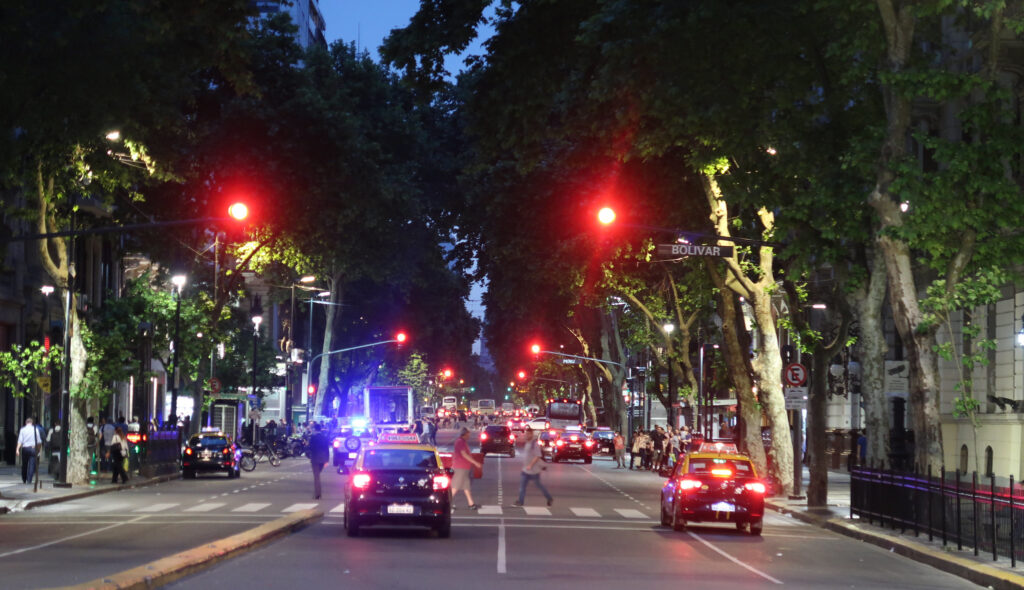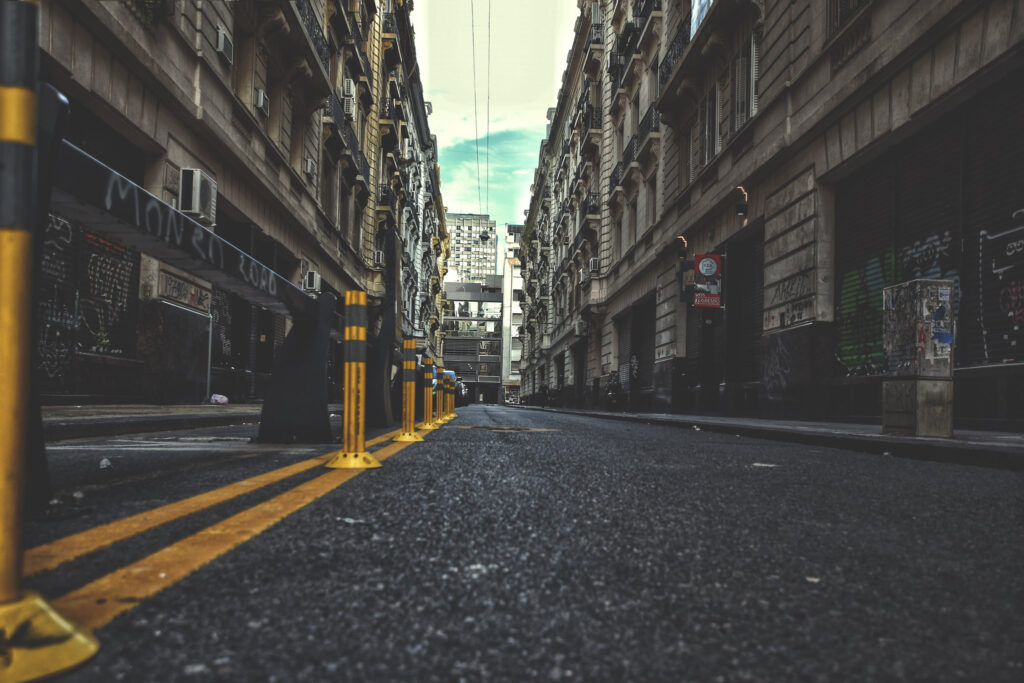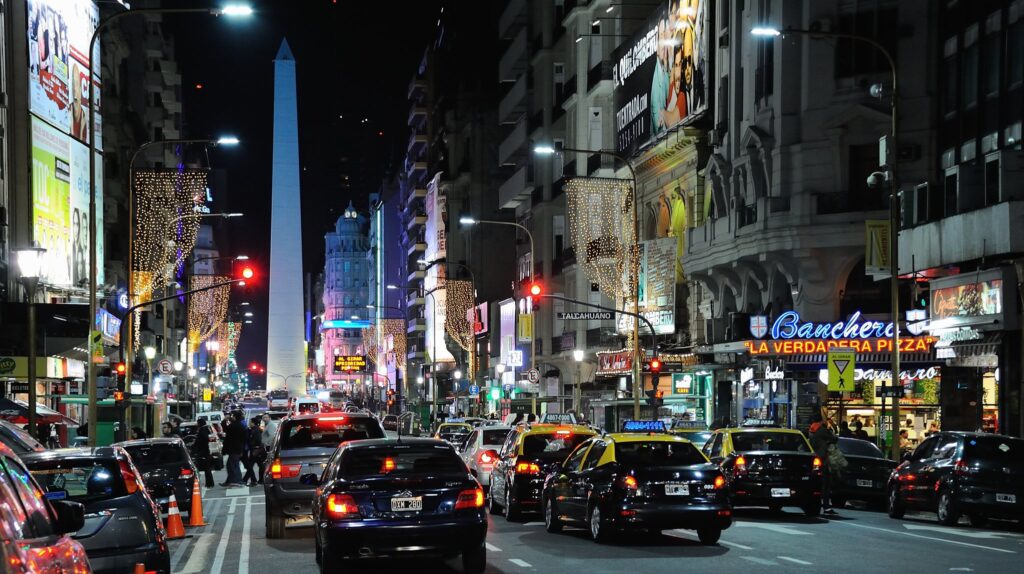Driving in different cities and countries is as wonderful an experience as traveling. Although we can study in advance the driving regulations that govern each country, there are a series of “codes” that are not written anywhere and that, however, must be known.
The above is important, as long as you want to drive through the streets and avenues of Buenos Aires without getting a bad surprise.
The urban development of the City of Buenos Aires is a challenge for adventurers and travelers. Knowing the most dangerous areas and knowing how to orient yourself towards the four cardinal points is key, but it is also key to know what driving habits are, what you can do and what you should never do if you do not want to cause an accident or earn an insult.
In this short article, we will share some tips so that you know how to drive your motorcycle or vehicle through the streets, avenues and highways of Buenos Aires. Stay until the end and make your experience behind the wheel pleasant and not tragic.
Simple and Useful Tips for Driving in Buenos Aires
Always Keep Your Lights On
In Buenos Aires, the driving rules generally align with international standards, such as giving priority to the right and overtaking on the left.
However, there’s a crucial exception unique to the city: you must always drive with your headlights on, day and night. Remember, as soon as you start the engine, turn on your lights.
This simple act not only complies with local laws but also increases your visibility to other drivers, enhancing safety on the road.
Priority to the Right is a Relative Concept
While the rule is to give priority to the right, in practice, this concept can be quite fluid in Buenos Aires. Argentine drivers are known for their assertiveness and won’t hesitate to advance if they sense any hesitation from other drivers.
The key takeaway here is to be cautious yet assertive—defend your right of way firmly because others might not yield it voluntarily. Waiting for a completely clear intersection can lead to long delays given the city’s heavy traffic, so it’s often impractical.
Balancing caution with assertiveness helps in smoothly navigating intersections and traffic-heavy areas.
Pedestrians: A Resigned Victim
In Buenos Aires, the approach to pedestrian right-of-way can be somewhat contradictory. As a driver, you may find situations where allowing a pedestrian to cross could actually confuse other drivers more than it helps the pedestrian.
This paradox arises from the city’s unique driving culture where not all drivers expect to stop for pedestrians consistently.
However, it’s crucial to remember that safety comes first. You should always avoid endangering pedestrians—never risk an accident by failing to yield to someone who is already crossing the street.
Buses: Kings of the Asphalt
Public transportation in Buenos Aires, particularly buses, often assumes priority over other vehicles, and their presence is felt more intensely here than in many other places.
Bus drivers in Buenos Aires are notorious for their bold and sometimes hazardous overtaking maneuvers. As a driver, it’s wise to always give buses as much space as possible.
Competing with a bus on the streets of Buenos Aires is not only risky but could also result in significant damage to your vehicle. It’s better to stay patient and maintain a safe distance, prioritizing the integrity of your car and personal safety.
Keep Calm and Stay Alert on the Road
One of the most impressive aspects of traffic in Buenos Aires is the extensive network of highways connecting the city to its suburbs and beyond, such as the Panamericana.
These vast highways, sometimes stretching across five or six lanes, witness fast-moving traffic that merges, overtakes, and exits with an orderliness reminiscent of a choreographed dance at Bombonera or Monumental stadiums.
While the scene might initially seem intimidating, maintaining focus and prudence ensures a smooth ride. Most Argentine drivers are comfortable and vigilant behind the wheel, though a notable few do take unnecessary risks.
The key to navigating these highways safely is to stay calm, remain in your lane, and keep your eyes wide open. Oftentimes, those who prefer weaving through traffic will overtake you effortlessly, without requiring you to do much.

Be Mindful of Bike Lanes
Buenos Aires features designated bike lanes, known as ‘ciclovías’, which are exclusive to cyclists and typically located to the left of the streets and avenues.
These lanes are off-limits to motor vehicles and motorcycles, and any encroachment, even minor, can lead to fines and traffic accidents. Not all streets in Buenos Aires have bike lanes, and in areas without them, cyclists often use the left lane.
This ongoing issue highlights the challenging coexistence between cyclists and motor vehicles in the city.
Whether you are driving on roads with or without bike lanes, it is important to respect cyclists, particularly when making left turns, to prevent accidents and ensure the safety of all road users.
Do Not Block Pedestrian Crosswalks
Pedestrian crosswalks are designated zones for pedestrians to safely cross from one sidewalk to another. Ideally, all pedestrians would use these crosswalks to traverse streets, but the reality in Buenos Aires can be somewhat different.
Regardless, it’s crucial for drivers and motorcyclists to ensure that these crosswalks are never obstructed. If you anticipate that the traffic light will turn red before you clear the intersection, do not advance your vehicle only to stop on the crosswalk.
During peak traffic times, the pressure from impatient drivers may tempt you to make a premature move and block the crosswalk.
However, always prioritize adherence to traffic laws over yielding to pressure from other drivers. If you accidentally find yourself on a crosswalk when the light changes, make every effort to reverse slightly and clear the space for pedestrians.
Overtaking on the Left… In Theory
While the rule states that overtaking should occur on the left, in practice, if you’re slow to move over, faster vehicles often overtake on the right.
If you notice a vehicle rapidly approaching in your rearview mirror and you don’t have time to move aside, sometimes it’s safer to hold your line.
The approaching driver will likely overtake you one way or another, not hesitating to use the right lane if necessary.
This practice, though not ideal, is a common aspect of driving in Buenos Aires, and understanding this can help you anticipate and react more effectively to the dynamic traffic patterns.
Watch the Road Conditions
When driving in Argentina, particularly outside of Buenos Aires, pay close attention to the road conditions. It’s not uncommon to encounter large potholes even on highways.
This requires drivers to be vigilant at all times to avoid potential damage to their vehicles. The varying quality of road maintenance can present unexpected challenges, making it essential to stay alert and drive cautiously, especially in less urbanized areas where the road conditions can deteriorate significantly.
Maximum Attention Required in Buenos Aires
Driving in Buenos Aires demands your utmost attention. The city’s bustling streets are fraught with potential hazards from every direction—be it other cars, buses, taxis, or motorcycles.
The complexity of navigating through such diverse traffic increases the risk of accidents, which is reflected in Argentina’s relatively high traffic mortality rate.
It is crucial to remain vigilant at all times, anticipating the actions of other road users and continuously assessing your surroundings to ensure safety.
Use Turn Signals and Hazard Lights to Indicate Your Movements
Using turn signals and hazard lights to indicate your intentions is a critical practice in Buenos Aires, as in any city worldwide. In a city where many traffic accidents result from reckless driving, these signals are essential for preventing collisions.
Remember, hazard lights should be used when you need to stop temporarily without parking, while turn signals let other drivers know that you will be turning left or right at an upcoming intersection.
It’s mandatory to use these indicators, but be mindful that overuse or inappropriate use can lead to confusion and frustration among other drivers, as they may not be able to understand your intended maneuvers.
No U-Turns on Two-Way Streets and Avenues
Many avenues and streets in Buenos Aires are two-way, meaning traffic flows in both directions, typically only divided by two yellow lines.
A common violation among even local Argentine drivers is to make reckless U-turns on such roads, switching from one direction to the other, or making a 90-degree turn to enter an intersection that requires crossing to the opposite lane.
Both actions are traffic violations and are significant causes of collisions that could otherwise be avoided. On these two-way avenues, not only are U-turns prohibited, but turning at intersections with other streets or avenues is only permitted in 90 degrees when it does not involve crossing into an oncoming lane.
Double Traffic Lights
In Buenos Aires, double traffic lights often display two different signals: one for vehicles continuing straight on an avenue or street and another for those needing to turn left or right.
These traffic lights are designed to facilitate vehicle flow and prevent movements that might interfere with other traffic. When approaching such traffic lights, it is crucial to understand which signal applies to you and which does not.
Misinterpreting these signals can easily lead to traffic accidents. Paying close attention and understanding the specific lights for straight movement and turns can significantly reduce the risk of incidents and ensure smoother driving experiences in the city.

Yellow Curb = No Parking
Finding a parking space on the streets of Buenos Aires has become increasingly difficult due to the heavy volume of traffic and city measures aimed at discouraging vehicle use to reduce noise pollution and air pollution.
A clear indicator that you cannot park at a location is if the curb or edge of the sidewalk is painted yellow. These yellow-marked areas are often found at corners, street crossings, or critical zones where vehicle parking could obstruct traffic flow.
Parking here is not only prohibited, but doing so can result in a parking ticket and your vehicle being towed by public service tow trucks.
Private Parking Lots
Given the parking restrictions described above, you might wonder where you can legally park your vehicle.
While it’s possible to find public parking spaces, these are often scarce and come with their own set of rules, such as avoiding spaces near ramps for disabled persons, pedestrian crossings, private driveway accesses, or yellow-painted curbs.
A more reliable option is to use private parking lots or garages. Although this might cost more, depending on your budget and location, it ensures your vehicle is safe from accidents or theft.
Additionally, using private parking saves you the hassle of searching for a spot and avoids potential disputes over parking spaces with other drivers.
Other Important Driving Rules in Buenos Aires
Driving in Buenos Aires, like the rest of Argentina, means adapting to certain local regulations:
- Vehicles in Argentina have the steering wheel on the left side.
- It is illegal to have children under 12 years old in the front passenger seat.
- Babies and very young children must be seated in special child seats in the rear.
- Helmets are mandatory for motorcycle riders.
- Using a cellphone while driving can result in fines.
- If renting a vehicle, ensure that the license plate is visible both at the front and rear of the vehicle.
- Always have your vehicle’s documents readily available. Police checkpoints are especially common at night and on weekends.
- Legal blood alcohol content levels in Buenos Aires are 0.5 g/l for private vehicle drivers, 0.2 g/l for motorcyclists, 0.5 g/l for motorcycle passengers, and 0.0 g/l for novice and professional drivers such as taxi drivers, bus drivers, and truck drivers.
Quick Safety Tips for Your Security
- Always use GPS and a map to navigate around Buenos Aires.
- Avoid dangerous areas such as emergency villages and settlements, most of which are located on the outskirts of Buenos Aires.
- Never leave backpacks, purses, or bags on the passenger seat if it is unoccupied.
- Keep your vehicle’s doors locked and secure at all times.
- Despite the temptation or pressure from other vehicles, never cross a railway crossing until the barriers are fully raised.
- If you need to travel to the Province of Buenos Aires and driving is your only option, use highways and try to minimize detours through city streets or towns in that jurisdiction.
The Last Major Tip: The Misnamed “Car Minders”
In Buenos Aires, you might encounter individuals known as “cuidadores de coches” or “car minders,” often perceived as mafias or criminals disguised as well-intentioned people.
These individuals will ask for a fee to “allow” you to park and supposedly look after your vehicle on public streets, a practice that is illegal and punishable by law.
The amount they request can vary significantly depending on the area and its level of nightlife and dining activity, with more bustling areas typically having higher fees.
You face two main choices in dealing with car minders, neither of which is entirely favorable. The first option is to pay the requested fee and go about your activities without worry of potential damage to your vehicle.
However, if the idea of paying to park on public property seems unreasonable (and remember, it is illegal to charge for public parking), you can choose to ignore the car minder’s request and, if desired, report them to the police or call 911.
While it’s possible that the police may intervene to remove the so-called valet, it is more likely that their response will be slow or non-existent, potentially leaving your vehicle at risk of retaliation from the car minder.
This issue remains unresolved in Buenos Aires. Various solutions have been considered, from attempts to legalize and regulate these individuals to outright enforcement of their illegal status, citing the often murky and deep-seated mafia networks behind them.

Last Considerations
With this guide, driving in Buenos Aires should now feel less daunting and more like an integral part of your adventure in Argentina.
We’ve provided you with crucial insights into not only adhering to the basic traffic regulations but also navigating the less obvious aspects of local driving culture, making your experience behind the wheel as smooth as possible.
This article from ExpatPathways has prepared you to manage your vehicle safely, understand what you must do to stay within the law, and avoid any mishaps on the road.
Now, it’s time to rent your vehicle and set out to explore the dynamic streets of Buenos Aires, fully prepared and informed for the journey ahead.
(Featured Image Source: Diego Maldonado/flickr.com)


